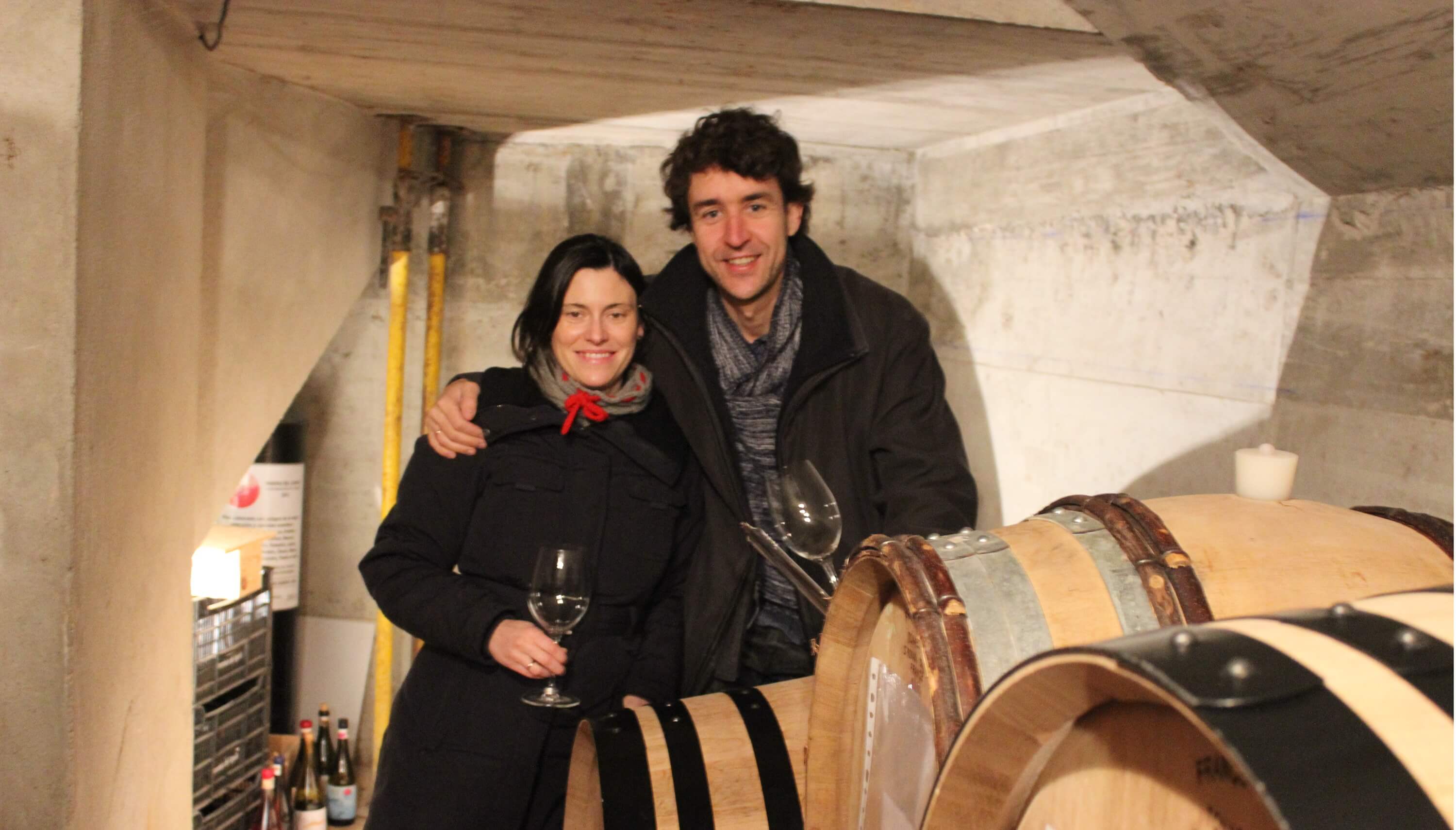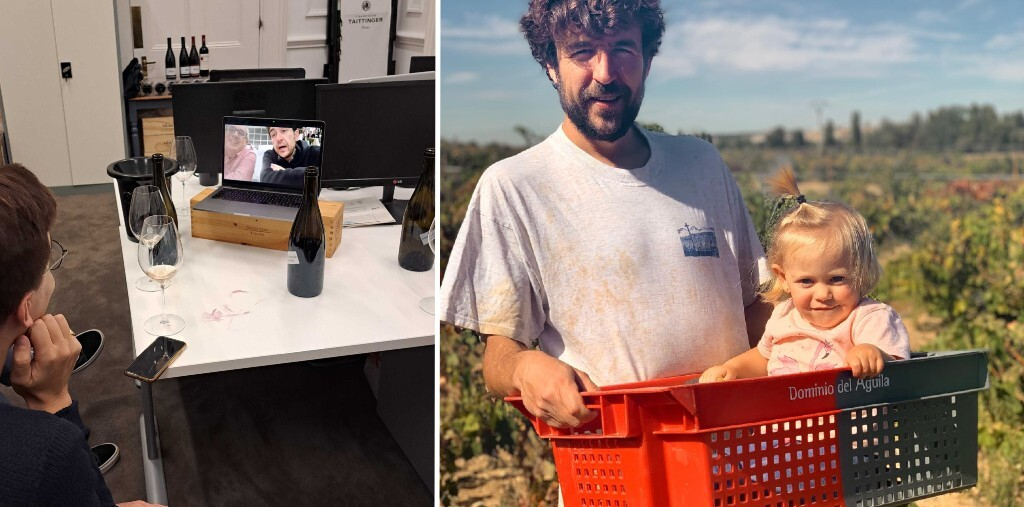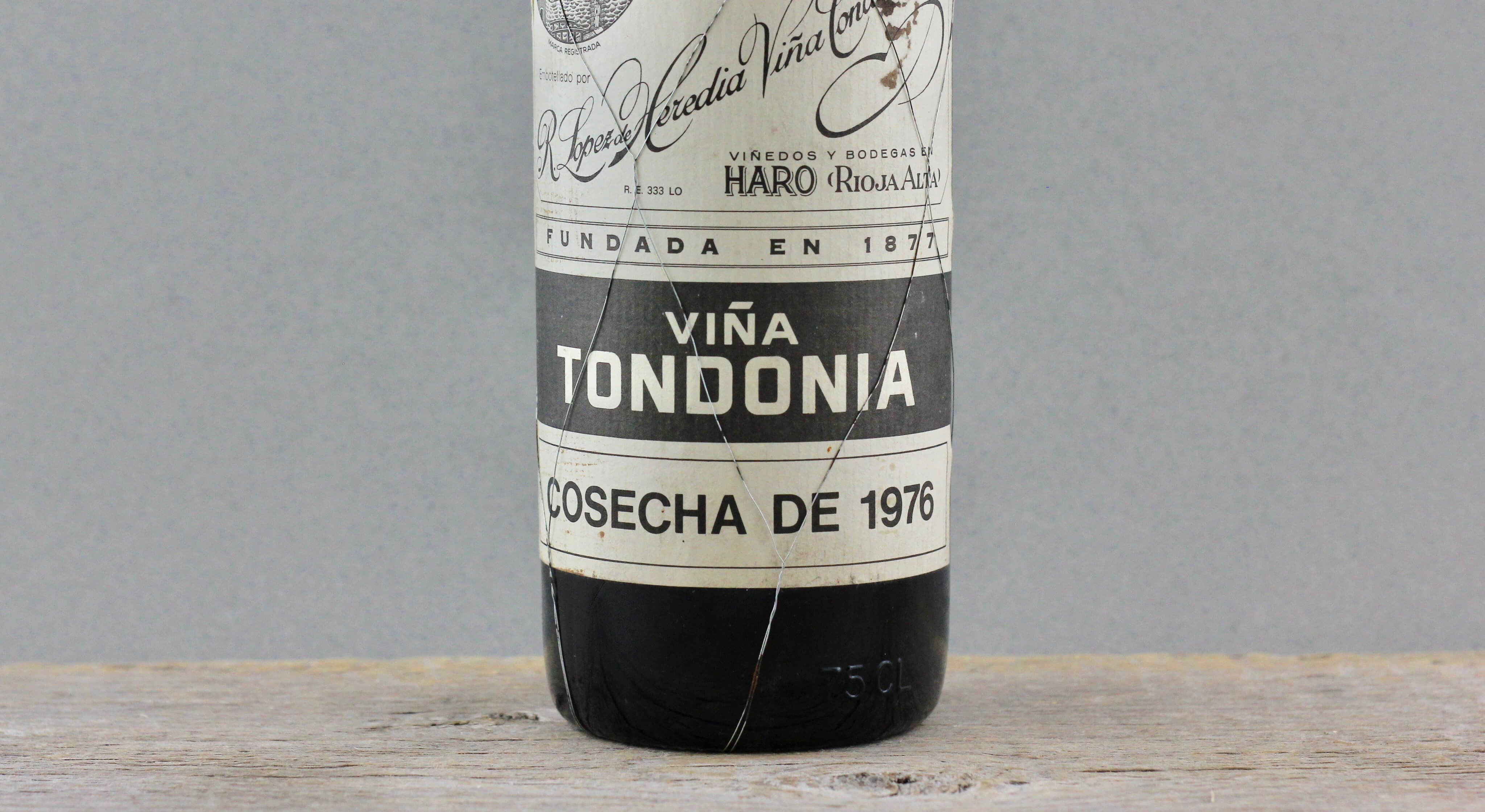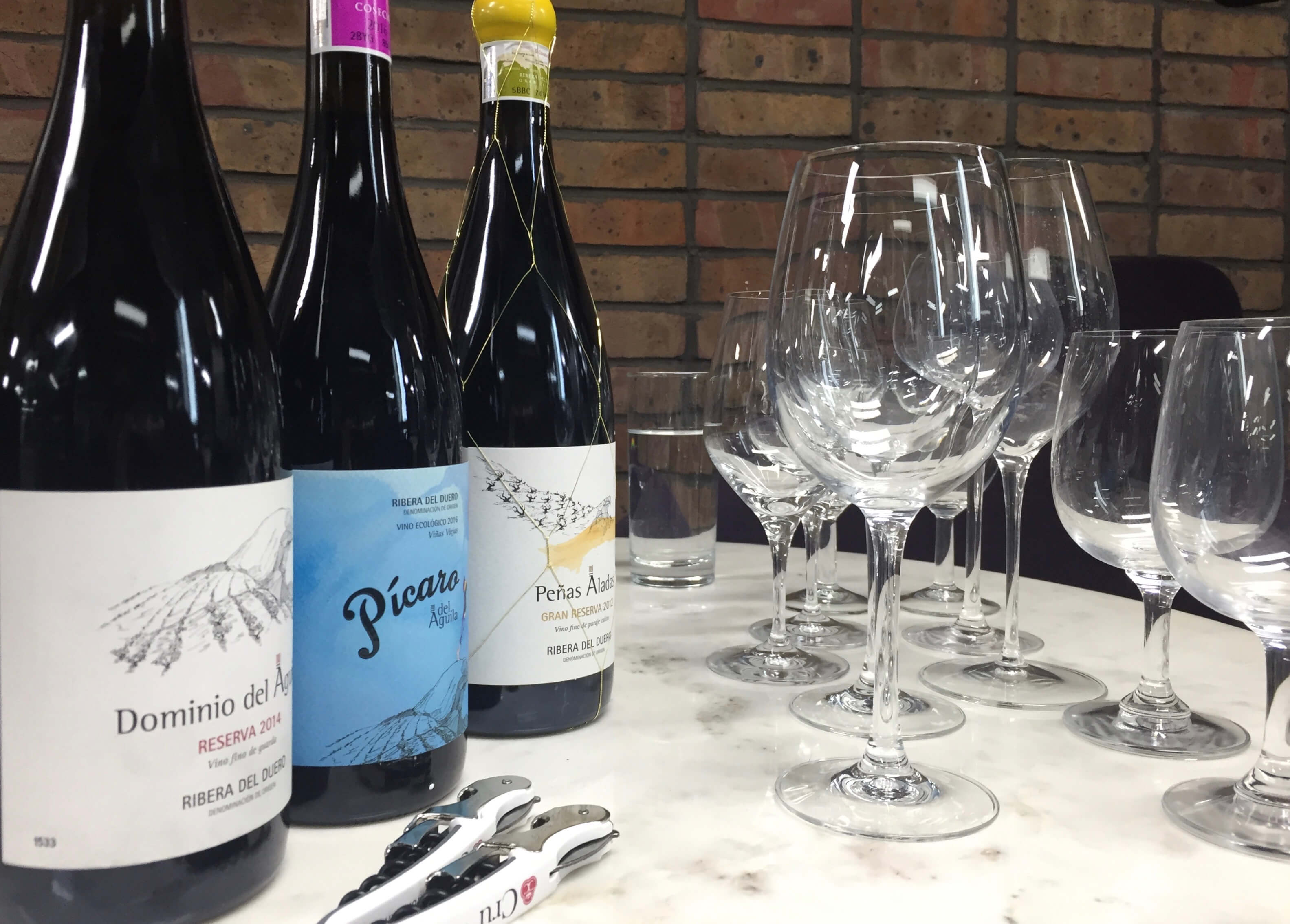

Q: Tell us a little about your goals in the vineyard in the winery; what sorts of obstacles have you had to overcome to achieve these?
We aim to cultivate the vineyards organically, without using any form of artificial additive or chemical. Therefore each parcel is able to display its unique “terroir” character. To achieve this, we prefer to use horse-drawn ploughs in the vineyard as well as methods tending towards biodynamics. The most important thing is to carry out our work in balance with the ecosystem. Of course we have the advantage that we already work with very old, hardy vines of “tempranillo fino”.
Regarding the winery, the aim is to continue producing artisanal and balanced wines of very high quality through traditional practices while applying a contemporary knowledge within the context of our own experience. We want to produce wines that can reflect clear terroir character, and overall be pleasurable to the people who drink them.
Q: What do you see as the main challenges to the Ribera del Duero appellation and what would you like to see happen in the future?
The Ribera del Duero appellation needs a deep regeneration so it focus again in the promotion of high quality wines which sustain and boost the appellation prestige that has been built so far, and that, unfortunately is being undermined by the boom of many wineries which are only interested in producing big volumes at small prices, understanding wine just as a business.
Another challenge, more specific, is the inclusion of the white wine within the appellation. This is something that is already on the table, and that we fully support, but that unfortunately is going to take time…
Also we bet for the creation of a thorough classification of the vineyards in different qualities (such it is done in Burgundy) to empower the idea of “terroir”.
Q: How do you see Dominio del Aguila growing in the future? Would you like to always remain a more ‘boutique’ winery?
Our idea is that the Dominio grows but in quality! We want to do a very controlled production; meticulous fruit selection and management of the vineyards and the grapes.
Q: Clarete is lesser known to the UK market. Can you tell us a little about the history of it and how it is consumed in Spain?
The “Clarete” is the traditional wine in this region, and the only one that was made at the beginning in the villages (in the “lagares”), both in a family scale and also for sale. It was progressively abandoned when the red wines arrived, up to a point that it totally disappeared except from some small domestic elaborations.
Dominio del Aguila has been the first winery in Ribera del Duero to rescue this kind of wine (based on old vineyards and on the blend of the ancestral indigenous varieties of this region) and to try to restore the prestige that it had once. Our forefathers never stopped elaborating “clarete” and for us, the fact of keeping on doing is like preserving an historic building of great value. We consider it our heritage…
Unfortunately, nowadays the rosé wines that are being elaborated in the Ribera del Duero are mostly wines based on the technology and the use of biochemical products. Nothing to do with what it was done aforetime.
Q: Can you tell us a little about the past few vintages, 2012, 2013 and 2014?
What were the challenges brought by each and what are your personal preferences?
2012 was a particularly sunny year with long growing season and few rains, but with a perfect maturity. The wines are consistent, and giving them time for aging they undoubtedly improve, both in aroma and deepness. A wine to be kept long time but that is also accessible now.
2013 is what we can an Atlantic year with short growing season. Spring and autumn were cold, and summer was rainy.It is a fresh vintage, which the good “vignerons” have known how to transform into great wines. It is not a common vintage in Ribera del Duero because of this freshness. It has medium body but very fine. For the great “terroirs,” this is a vintage to keep on aging.
2014 was another sunny year akin to 2012, with very long growing season, a hot maturity period and generous harvest. Very generous and splendid wines, with a lot of charm and good aging capacity.
At Dominio del Aguila each one of these vintages has its own personality because we vinify wines that reflect both the “terroir” and the vintage. 2012 for example is a vintage to drink now but also to keep many years, 2013 is a great vintage for Clarete and to taste little by little to evaluate its aging capacity. 2014 wines are very accessible from the beginning and they will age very well…
Q: Your soon-to-be-released Gran Reserva is a single vineyard, as is the hedonistic Canta la Perdiz
you currently have resting the cellar. Do you have plans for more single-vineyard parcels or any more additions to the range?
So far we have vinified “Peñas Aladas Gran Reserva” and “Canta la Perdiz” as single vineyards because we have found intrinsic characteristics in each of the parcels that make these wines to be different in a very special way.
We are working in other parcels, and, even if we see that some of them show up some specificity, we will watch them close and we will decide what to do when the right time comes. Currently the parcels that go to “Dominio del Aguila” blend are really really good but we do not intend to take them away from there. Furthermore, there are some other parcels that excite us, but currently there are contracts to sell the grapes. Maybe in the future…
Q: You have worked with some impressive estates in the past.
Who are your greatest influences in the wine world, and what have they brought to the style of your wine today?
I had the great experience to work at the DRC (Domaine de la Romanee Conti), where I got to live the wine every day. The passion of Aubert de Villaine was inspiring for me, and the humbleness of Bernard Noble and his knowledge a mirror to look at. WHile there, I realised just how little I knew; that everyday you have the chance to learn something, and that you can find “grand crus” in many places… even in La Aguilera!






















